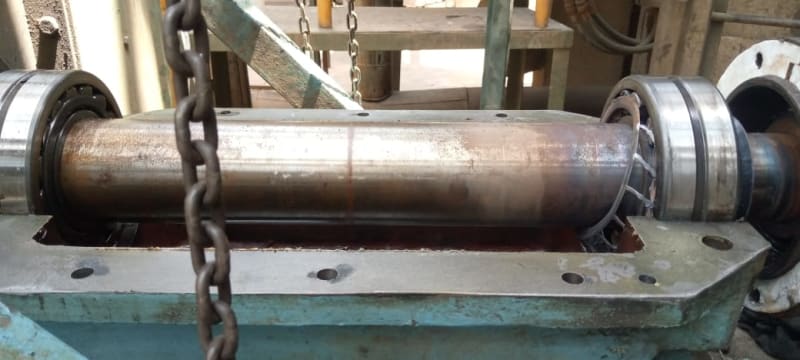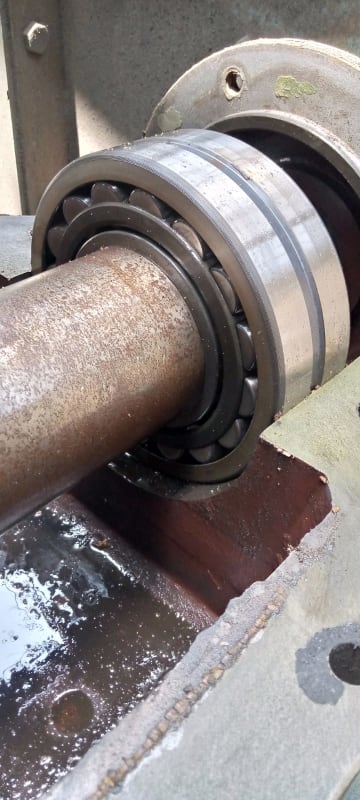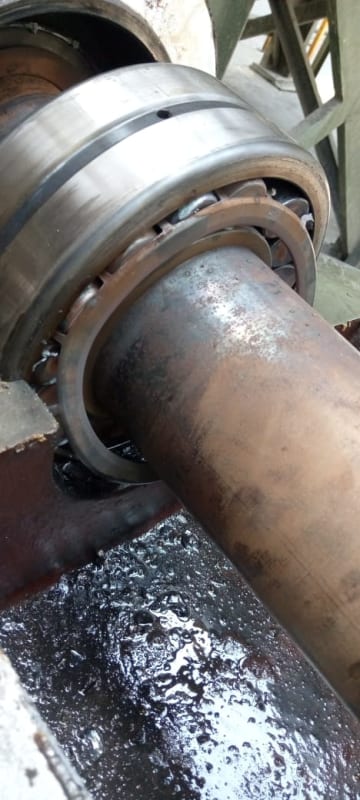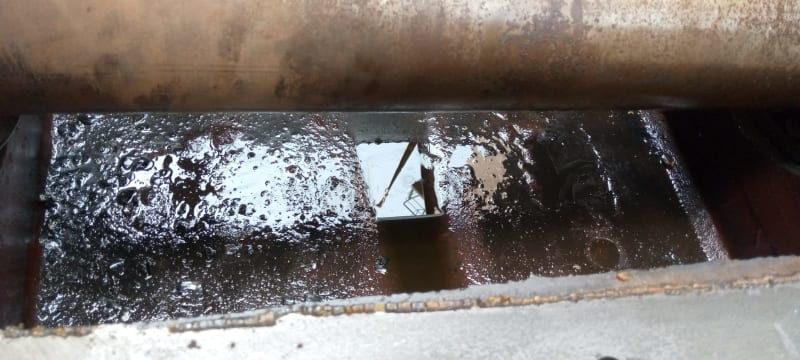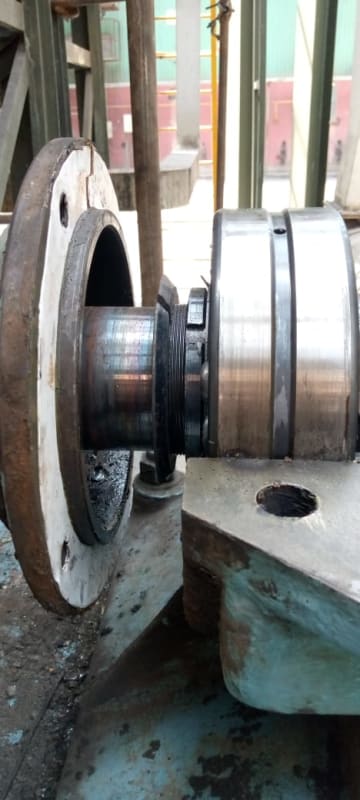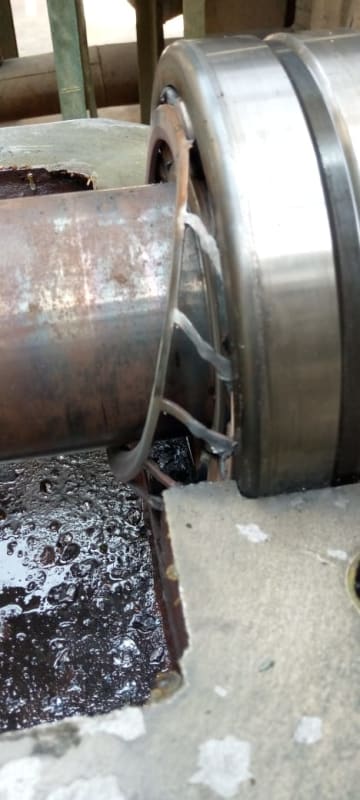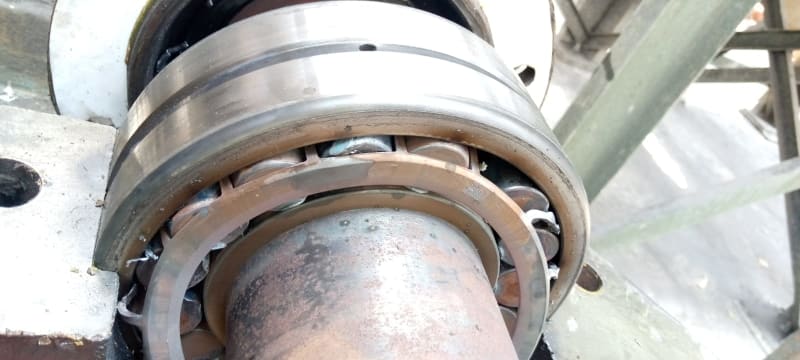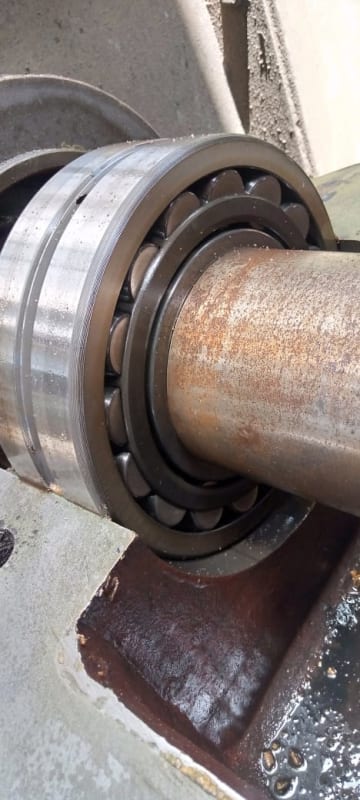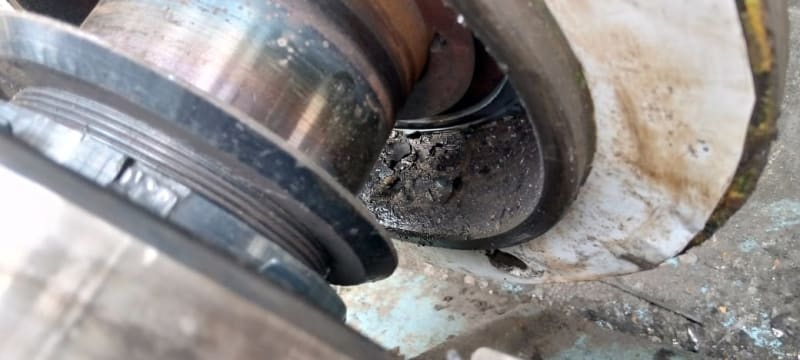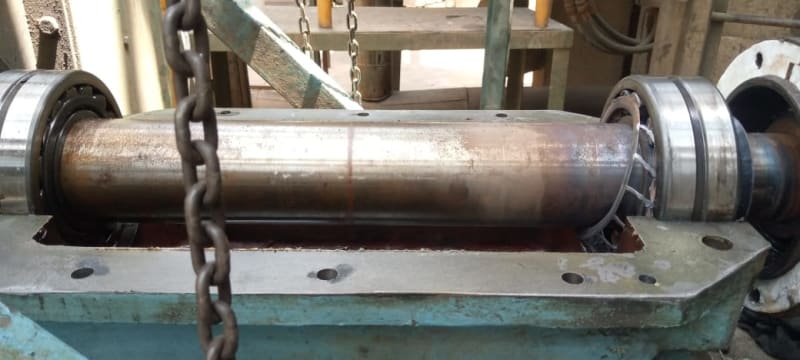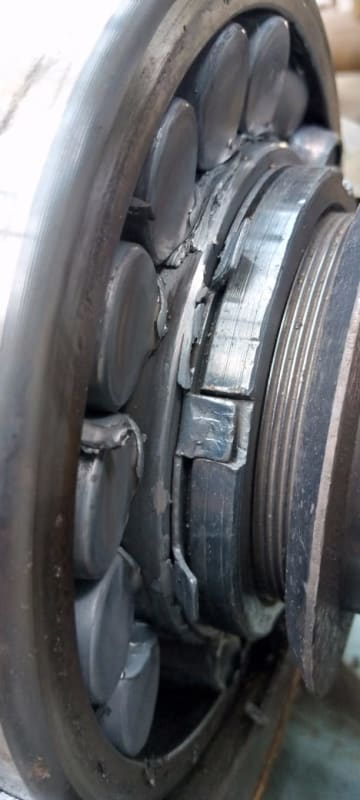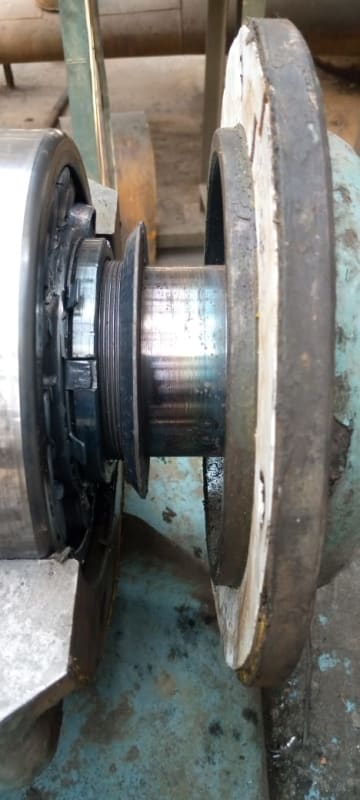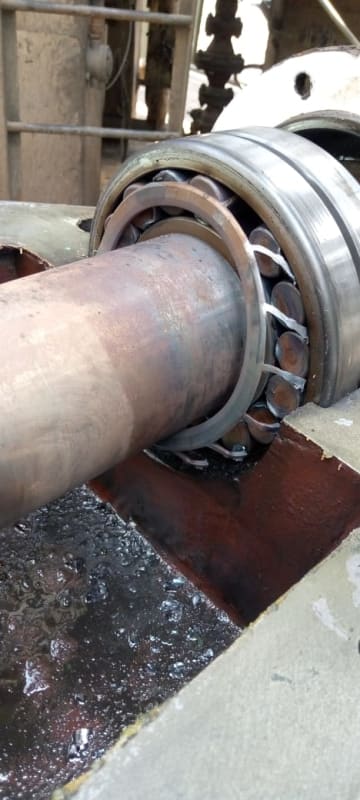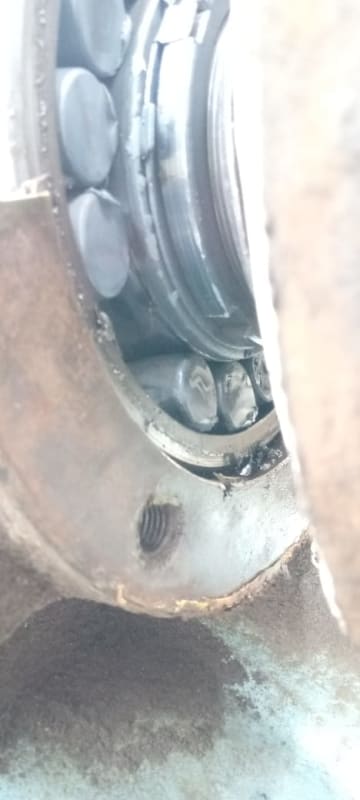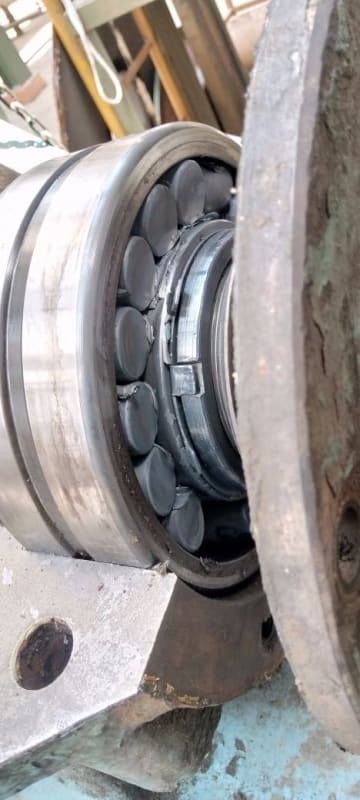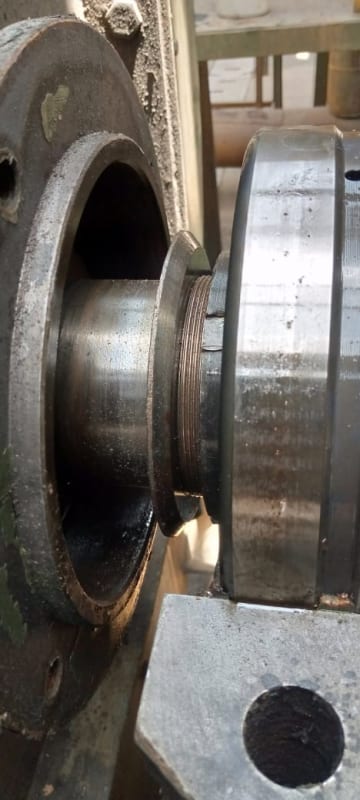I have seen a few loss of oil events. Rolling elements, cage and races ended up mostly black and adjacent area on the ring stained brown. To my thinking that appearance is the result of a slow global overheating event which occurs after loss of oil and is global affecting all those things uniformly. In contrast what we see in the OP photo are signs of rapid localized overheating (indeed enough to melt things) but not sustained heating of the whole bearing (other than as noted the shaft which may have had inner ring spinning on it at some point in time).
That's not really scientific, just the way I see it. Maybe there are different appearances for different bearings at different speeds and loading with different oil types or different rates of loss of oil (sudden or rapid oil loss). But fwiw this just doesn't feel like loss of oil to me...
Then again, I appreciate Tmoose's
linked photo. That sums up my ability to nail down what happened with any degree of confidence. Which is not to say it's not worth proposing ideas and asking more questions. But I'm backing out, I have no more input about what happened.
To op - thanks for providing the requested info, but now that we've seen it, I don't know what to do with it.
Actually I will revisit one theme. Regardless of exact circumstance of this failure, it is somewhat expected that you will have occasional things like this happening if you have a critical rolling bearing machine without any condition monitoring. Among other things, rolling bearings can and do experience fatigue spalling. It generally starts on a small scale and is easily detected in early stages with vibration monitoring, but if undetected and unaddressed, the damage will continue spreading until the machine grabs your attention (by stopping if that's what it takes). Monitoring by experienced operators who pay close attention (whether by sound or feel or screwdriver) can also be a pretty good screening system. But if you have none of those then imo type of thing is an eventual inevitability.
